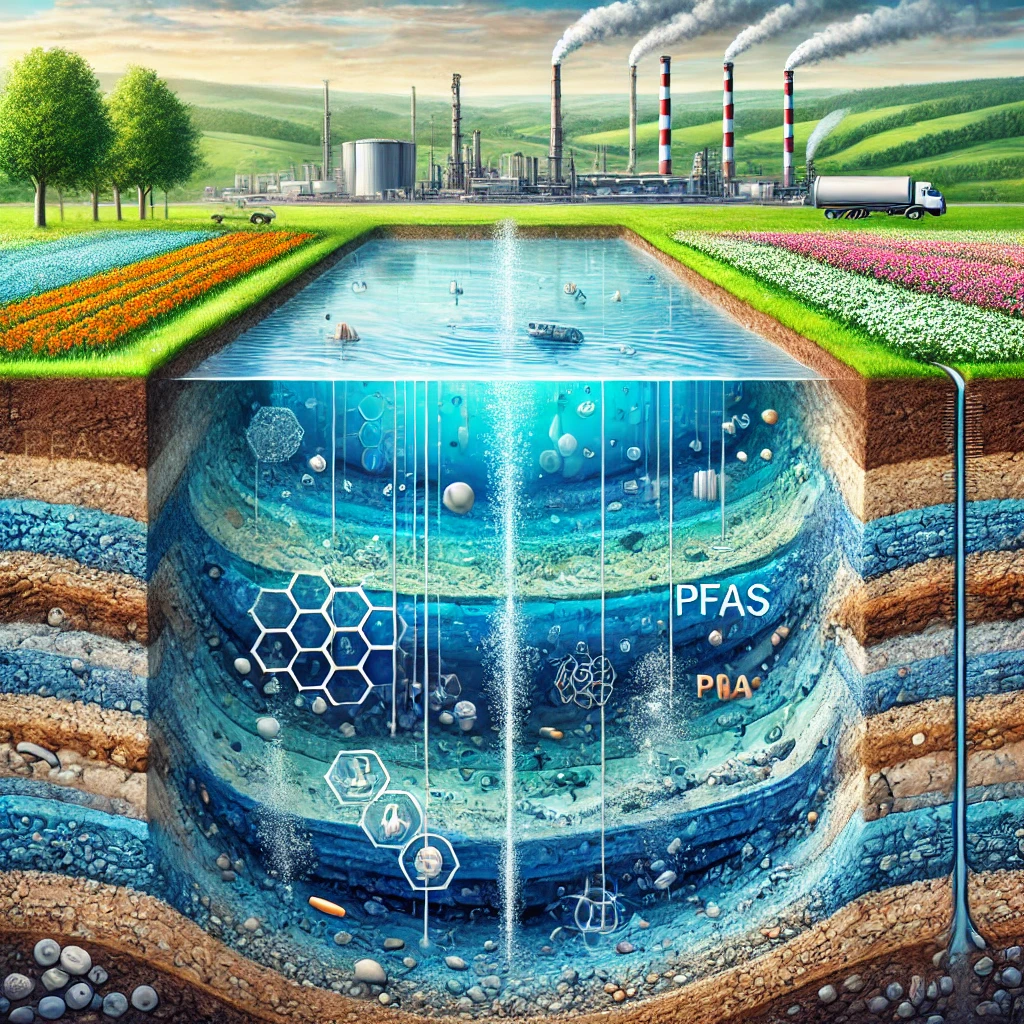By CASC4DE December 5, 2024

The groundwater of the Upper Rhine region—shared by France, Germany, and Switzerland—faces growing threats from pollution caused by emerging contaminants. The ERMES-II Rhin project (2022–2025), spearheaded by APRONA (Association pour la Protection de la Nappe Phréatique d’Alsace), has unveiled concerning preliminary results, emphasizing the urgent need for collective action to protect this vital resource.
💧 A Precious Resource Under Threat
The Upper Rhine aquifer, one of Europe’s largest, supplies drinking water to over 7 million people and supports agriculture and industry in the region. However, it is under increasing pressure from chemical pollutants, including nitrates, pesticides, PFAS (“forever chemicals”), and pharmaceutical residues.
Recent studies confirm that 91% of monitoring points within the aquifer detect at least one of the 20 targeted PFAS. Furthermore, 98% of the aquifer contains trifluoroacetic acid (TFA), a byproduct of pesticide degradation, highlighting the pervasive nature of chemical pollution. While no breaches of potable water quality limits have been found, the presence of these contaminants raises alarms about long-term health and environmental risks.
Key Findings from the ERMES-II Project
- 🌊 Widespread Contamination: Persistent pollutants like PFAS are found across most monitoring points. Despite low concentrations, their presence signals lasting environmental impacts.
- ⚠️ Diverse Pollutants: Pesticides, metabolites, and pharmaceutical residues are widespread, confirming a complex pollution landscape.
- 🔬 Advanced Techniques: State-of-the-art analytical methods allow scientists to identify unexpected and emerging contaminants, providing a comprehensive view of the threats.
- 🤝 Cross-Border Collaboration: France, Germany, and Switzerland work together under the ERMES-II framework, showcasing the power of transnational cooperation in tackling shared challenges.
The Way Forward
Interim results underscore the urgent need for adaptive management:
- 🛑 Stricter Pollution Control: Reinforcing regulations to limit industrial discharges, pesticide use, and other contamination sources.
- 💸 Investment in Treatment: Upgrading water treatment systems to remove persistent and emerging pollutants effectively.
- 📜 Updating Legal Frameworks: Ensuring that regulations reflect the latest scientific knowledge on contaminants like PFAS.
🌍 Broader Implications
The findings from ERMES-II extend beyond the Upper Rhine, providing valuable insights into groundwater challenges across Europe. As the project continues through 2025, additional analyses will include hydrocarbons, microplastics, and pharmaceuticals. The final report aims to guide sustainable groundwater management and align with EU Water Framework Directive goals.
Protecting the Upper Rhine aquifer is critical not just for the region’s 7 million inhabitants but also for ensuring the long-term resilience of Europe’s natural resources.
💡 Did You Know?
The Alsace aquifer is one of the largest groundwater reserves in Europe, making its protection essential for future generations. Together, we can safeguard this precious resource.
For more details about the ERMES-II Rhin project and APRONA’s efforts, visit the official project page: ERMES-II Rhin.




